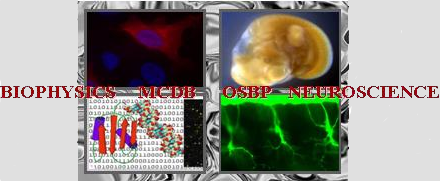Poster abstracts
Poster number 21 submitted by Dale Lingo
Functional characterization of Histoplasma capsulatum chitinases
Dale E. Lingo (Molecular, Cellular, and Developmental Biology Graduate Program), Sara Justinano (Dept. of Microbiology, The Ohio State University), Chad Rappleye (Dept. of Microbiology, The Ohio State University)
Abstract:
Histoplasma capsulatum is a dimorphic fungal pathogen which can cause severe lung infection in both immunocompetent and compromised people. The yeast morphology of this organism survives and proliferates in the phagocytic compartments of macrophages, where other fungal pathogens are typically cleared. Chitin, a core constituent of many fungal species cell wall, is crucial for maintaining cell structure and protection from extracellular stressors. The ability to undergo morphological transitions, budding, and hyphal extension require arcuate and timely repositioning of cell wall components. Thus, it is important to understand how H. capsulatum maintains its cell wall during both its environmental and infectious stages. There are 8 chitinases (CTS1-8), enzymes responsible for breaking down chitin polymers, present in the H. capsulatum genome. We have constructed strains in which individual chitinases were knocked-down via integration of an RNA-interference (RNAi) construct to study their individual roles. The CTS2-RNAi strain exhibits a clumping phenotype in yeast cells compared to the other strains, indicating a possible cell separation defect. To investigate if there are differences in chitin content in the mutant strains, we developed a staining protocol using Uvitex, a fluorescent dye which binds to chitin. A population of cells can then be measured for fluorescent levels via FLOW cytometry and microscopy to access differences in chitin content. Because cell size can affect FLOW results, the staining protocol will include a cell separation step (sonication) which will break apart the clumps while minimally killing cells. It is also likely that the chitinases have some function(s) during mycelial growth. To that end, we optimized a procedure to cultivate H. capsulatum hyphae to investigate if there are any defects in hyphal growth or branching. This work aims to understand the individual contributions of the chitinase used by H. capsulatum, which could serve as possible drug targets in future studies.
Keywords: Histoplasma, Cell wall, Chitinase
